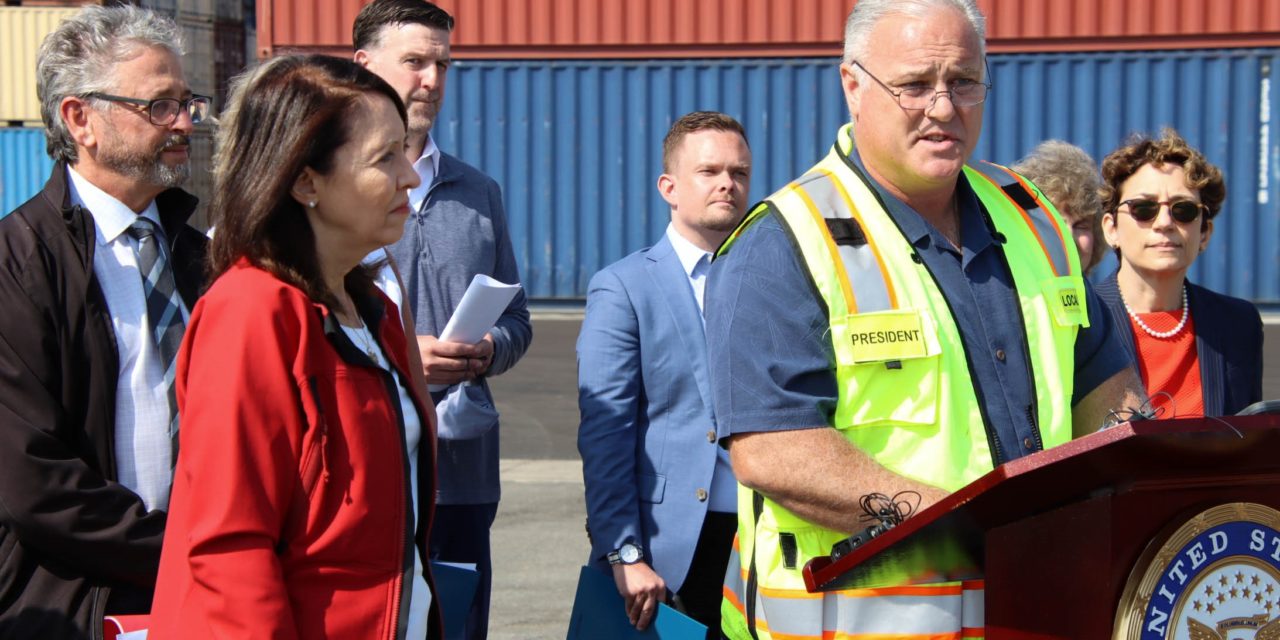The ports of Seattle and Tacoma, already seeking ways to reduce their carbon emissions and smog, are well-qualified to compete for some of a proposed $2.25 billion in federal money to electrify U.S. ports, a senior official said Wednesday.
Polly Trottenberg, deputy secretary of the U.S. Department of Transportation, visited Terminal 5 in West Seattle to tout the benefits of changing from fossil fuels to electricity. That’s just one program in the $1 trillion, 2,702- page infrastructure plan the Senate passed this month. It is now in the U.S. House.
Besides curbing pollution on the waterfront, the Infrastructure Investment and Jobs Act calls for a $7.5 billion investment in electric vehicle chargers, along with $5 billion for cleaner buses and $2.5 billion for ferries, a White House fact sheet says.
After promoting the infrastructure bill, she and Sen. Maria Cantwell, D-Wash., toured a hollow girder inside the West Seattle Bridge, which has been closed since March 2020 by runaway cracks. The city was awarded an $11.2 million federal infrastructure grant in June to help pay repair costs for a planned mid-2022 reopening.
Even without a new infrastructure bill, the Seattle port and operators already invested a half-billon dollars to modernize Terminal 5, along Duwamish Waterway near the high bridge. One berth will have shore power when T-5 reopens in early 2022, followed by a second berth in 2023, according to the Northwest Seaport Alliance.
Some of the world’s largest container ships can plug in to power their lights, circuits and refrigeration, instead of burning heavy bunker fuel, at the giant 185-acre dock.
“I know the Northwest Seaport Alliance — the ports of Seattle and Tacoma — are leaders in thinking through that commitment to zero-emission operations,” Trottenberg said. Later, she said the Puget Sound ports are innovative, and better prepared to use electrification grants than some other regions.
Photo credit: Patrick Sand westseattleblog.com

